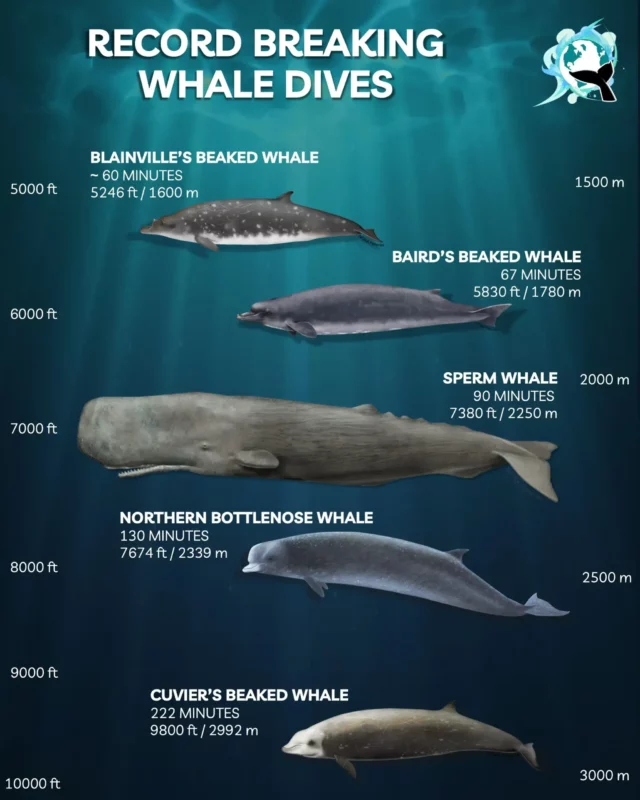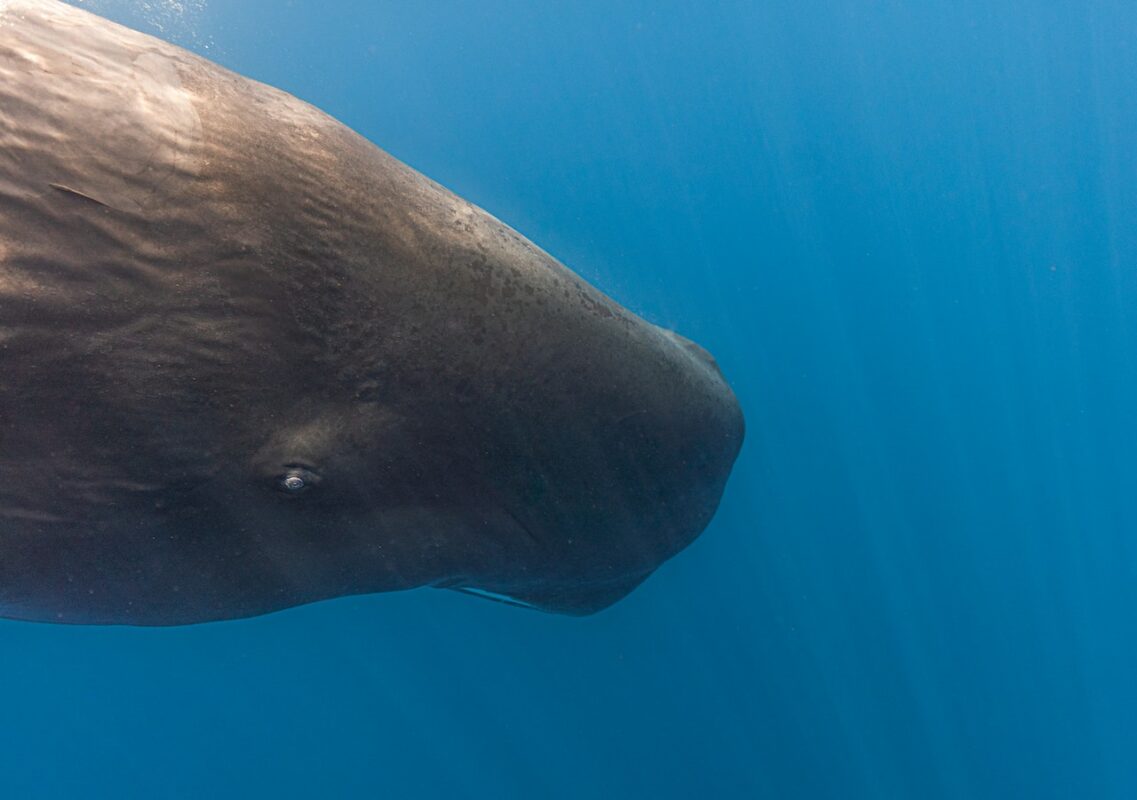Sperm whales are some of the most interesting animals in our oceans. They are notorious for regularly diving to incredible depths, often between 1,000 – 2,000 meters.
These mysterious whales can dive to such depths for over 60 minutes and will only return to the surface for a few minutes to recover before going back into the deep.
This begs the question “why do sperm whales dive so deep?”.
In a nutshell, sperm whales dive deep into the ocean in search of food such as giant squid, sharks, skates, and fish.
They have a unique adaptation that allows them to dive to such depths without suffering any damage from the pressure.
Let’s take a deeper dive into the topic…
Why Do Sperm Whales Dive Deep?
There’s no doubt about it, sperm whales are incredibly deep divers. They can hold their breath for as long as two hours which allows them to get right down into the deep blue.
The average diver for a sperm whale typically lasts around 45 minutes before they return to the surface and recuperate.
Squid just so happens to be the sperm whales’ favorite food, with female squids being able to eat anywhere between 700 – 800 squids on any given day.
In fact, it’s estimated that sperm whales consume anywhere between 110 – 320 million tons of squid in a year.
Squid are speedy swimmers that are found in abundance down in the depths of the ocean, so it only makes sense for sperm whales to go down there and hunt for them.
What’s better than squid for a sperm whale you may ask? Giant squid! A gigantic squid that humans rarely see.
Sperm whales dive down into the depths to feast on squid and actively hunt giant squid. Down in the depths is the best place for sperm whales to hunt these animals as this is where squid are most abundant.
How Do Sperm Whales Dive So Deep Without Being Affected By Pressure?
The sperm whale’s whole anatomy is perfectly designed for deep diving over long periods.
With each breath, we humans replace only 15% of the air in our lungs whilst sperm whales renew around 90% of their breath.
Their muscles are rich in oxygen-carrying proteins and can store 10 times more oxygen in them than humans.
As soon as the sperm whale leaves the surfaces of the water on its way down, the whale’s metabolism slows down to save oxygen and its blood is concentrated on vital organs like its heart and brain.
Sperm whales have a flexible chest cavity that ensures it doesn’t snap when the pressure starts to build down in the depths.
The sperm whale’s gigantic head, which is 1/3 of its total body length contains a yellowish wax called spermaceti (how fitting!).
It’s believed that these whales can vary the density of this substance at will. By restricting the blood supply the spermaceti solidifies, acting like weight which allows the whale to dive deep easily.
When the whale is ready to resurface it reheats its spermaceti causing it to liquefy until it is lighter than water. This makes coming up from the depths easy for the whale.
To avoid decompression, the whale is able to collapse its lungs whilst still sending oxygen to the brain.
Are Sperm Whales The Deepest Diving Whales?
Whilst sperm whales are some of the deepest divers in the ocean, they are not the deepest divers of the whale species.
Sperm whales typically dive to depths of between 1,000 – 2,000 meters, but the deepest recorded dive from a whale was a whopping 2,992 meters.
The record for the deepest diving whale belongs to the Cuvier’s beaked whale which can dive for up to 222 minutes and get down to almost 3,000 meters.

The sperm whale comes in at third place on the deepest diving whale chart, which certainly isn’t bad given how large these animals are.
Can A Sperm Whale Go To The Bottom Of The Ocean?
No, sperm whales can not swim to the bottom of the ocean. Whilst they can dive incredibly deep, the ocean is simply too deep for many animals, including ourselves to even visit briefly.
The ocean can seem like a scary place to many when you wrap your head around just how deep it actually is.
The deepest part of the ocean is known as the “Challenger Deep” and it’s located beneath the Western Pacific Ocean at the Southern end of the Mariana Trench.
Down at these depths, you wouldn’t be able to see much even with the best equipment out there, and the pressure is more than 16,000 PSI at the bottom.
Challenger deep is approximately 10,935 meters (35,836 feet) deep and is one of the least explored parts of the ocean.
When you consider that thousands of people have visited Mount Everest which is the highest point on land, only 3 divers have ever explored the Challenger Deep.
It’s certainly not for the faint-hearted, not even for sperm whales that are capable of swimming up to 2,000 meters at a maximum.
That said, the average depth of the ocean is around 3,688 meters so sperm whales are not too far off.
Final Thoughts
Sperm whales are incredibly fascinating animals. They are perfectly adapted to life in the depths of the ocean and are capable of diving to immense depths.
They are capable of swimming down to depths of up to 2,000 meters in search of their favorite food, the giant squid.
Such a squid is no easy meal, which is why on the rare occasion that sperm whales can be seen near the surface they are often covered in scars from battling with the giant squid.
I hope you have enjoyed learning more about why sperm whales dive so deep today and now have a better understanding of the reason these whales do this.
See you in the next one!

Hi, I’m George – the founder of MarinePatch. I created this blog as marine wildlife has been my passion for many years. I’ve spent over a decade in the marine wildlife industry and spent years out in the field conducting research. In today’s modern world, an online blog is the best place for me to share my findings and reach as many people as possible to help educate and inspire others. Enjoy your time here and you’re welcome back anytime!

